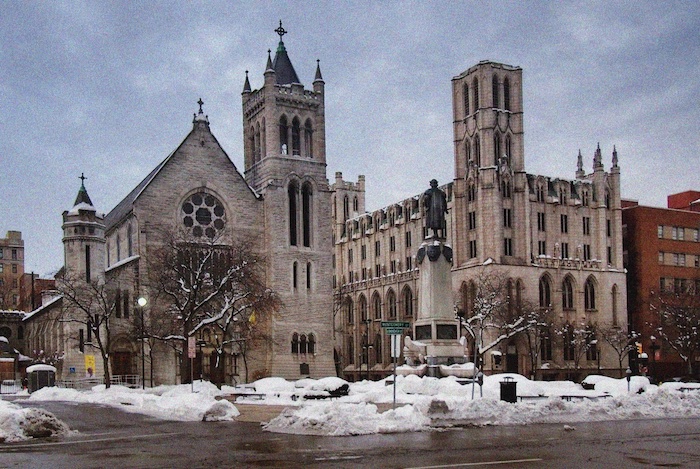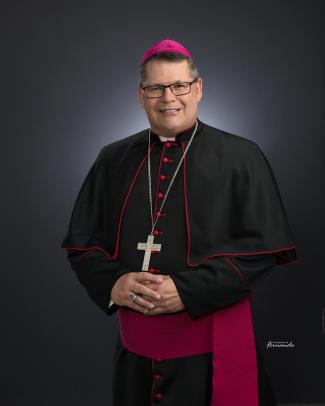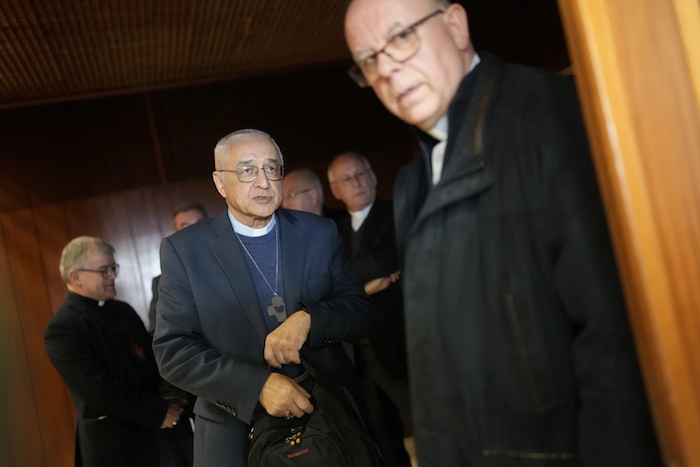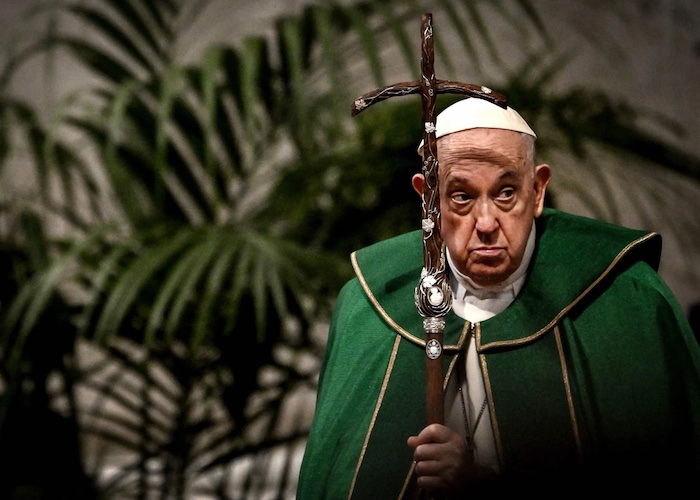— Santa Muerte Loves Her Queer Children

Santa Muerte, a folk saint of death, opens her arms to all LGBTQ+ people. Although there are many queer-coded saints within the Catholic Church, from Saint Sebastian to Joan of Arc to Juana Inés de la Cruz, none is more comforting to many LGBTQ+ Mexicans and other LGBTQ+ individuals around the world than La Santísima. It may seem strange that people who fight for their identities and existence on a daily basis would embrace a figure of death, but for queer devotees A.B. and Ash Mestizo, she is a source of solidarity and comfort.
A.B. is a nonbinary person living in Canada who was raised in the Catholic Church but parted ways with it many years ago due to continued homophobia and transphobia. They have struggled with mental illness all their life, acknowledging that “it is a battle which, I expect, I will lose one day.” Two and a half years ago, they attempted suicide but stopped as a divine presence called out to them. It was only until this year, describing the experience to a friend, that their friend suggested it may have been Santa Muerte’s voice in the darkness.
Similarly, pansexual Ash Mestizo was born into a Nicaraguan Catholic family. Although his grandmother was extremely devout, running the whole family’s spiritual health like many Latinx matriarchs, his mother was a free spirit who took advantage of the family’s inherited spiritual gifts. Seeing her use these gifts–connecting her and other members of the family to the spirit world and allowing superhuman abilities, Mestizo sought answers in Catholicism, then Evangelical Protestantism, Viccan, Asatru, ancestral folk magic, and finally sorcery.
After Mestizo’s children were born, he became involved in LGBTQ+ and BIPOC activism, climate advocacy, and anti-racism work, putting away their magical practice and ancestor veneration. It was only when his grandmother died that he needed a connection to the spirit world, right at the time that he found Santa Muerte. Ash “saw in her [his grandmother], the Latinx women I’d known, who raised me, who’d given me my heritage and my spirituality and my magic.”
This was one of the reasons A.B. was worried about joining the New Religious Movement (NRM) of Santa Muerte. Because they have no Spanish or Indigenous roots, A.B. first believed devotion to the skeleton often wearing a black cloak or wedding dress, , would be cultural or religious appropriation. However, as they have come to discover through Facebook groups like Devoted to Death, led by Dr. Andrew Chesnut, author of Devoted to Death: Santa Muerte, the Skeleton Saint (2017, Oxford University Press), Santa Muerte is one of the most universal faith figures as what she represents is the one experience that unifies and equalizes everyone, and her group of followers is growing meteorically, as far away as Poland and Ukraine.
According to Dr. Chesnut, Santa Muerte is the “fastest growing new religious movement in the Americas.” The COVID-19 pandemic likely contributed to this growth, with Chesnut referring to her as the newest plague saint, but one of the largest group of her followers are LGBTQ+ people of faith, often those raised in the Catholic Church but felt abandoned and traumatized by a Church that viewed their identities as a sin, continue not to recognize gay marriage, and limit access to gender affirming healthcare.
According to a 2020 study published by the Williams Institute, almost half (46.7%) of LGBT adults are religious, with almost 25% of religious LGBT adults identifying as Roman Catholic. It’s estimated that 1.3 million LGBT Roman Catholics live in the United States, and of these 1.3 million, LGBT adults are more likely to be highly or moderately religious if they are Latinx. Even so, of the 65% of Latinx individuals who were born in the US and raised Catholic, 23% said that they no longer identify as Catholic, including Mestizo, largely due to sex abuse within the Church, queerphobia, treatment of those in poverty or on the margins, and religious trauma.

I founded and currently direct Queer and Catholic, A CLGS Oral History Project based out of the Pacific School of Religion, and have discovered many LGBTQ+ people of faith who feel disenfranchised inside the Church. Yet, at the same time, they feel tied to it because it is all they have ever known spiritually, or often in the case of Latinx, Irish, Italian, or Polish Catholics, the Church is an integral part of their identities. Every celebration, from birthdays to baptisms to saint feast days to funerals is celebrated inside the Church so to leave would be recognizing a spiritual and cultural death that many queer people fear.
Mestizo is no longer Catholic or Christian , but still finds meaning in the Catholic interpretation and worship of Santa Muerte. “The Catholic-style interaction with Her made sense as someone who grew up with that modality of engagement with the Divine.”
The Church they once loved (and still often do love) does not love them back and creates a culture where families abandon and persecute them. But many still yearn for spiritual meaning and comfort in Catholic material cultures, so they turn to folk Catholicism, including the NRM of Santa Muerte. It is liberation through acceptance of death, as death is more imminent for those who live on the fringes of life, including LGBTQ+ individuals. LGBTQ+ folks are often thrown out of their homes, disowned by family and friends, undergo conversion therapy, or worse, all of which cause massive trauma and put queer lives in danger. “Some of us are too visible at the wrong moment,” A.B. writes, “and are murdered for it.”
“Queer folks have already failed at being acceptable to the Church and to society at large,” A.B. explained, “We have already failed at being acceptable to our families. If you’re already dead, why worry? Love fully. Fight recklessly. Seize joy where it lies, for as long as it lasts.”
Santa Muerte is therefore a personified version of Memento Mori, or a culture that forces people to confront their own mortality and eventual demise. In doing so, she cleanses LGBTQ+ people who often hide their entire lives out of fear or internalize the guilt and shame vocalized by the Church, their family members, and others, allowing her LGBTQ+ devotees to let go of the social baggage that they carry. Her devotion also resonates with people of the LGBTQ+ community who have lost friends and loved ones to the AIDS pandemic in the 1980s, when the government left LGBTQ+ people for death. Santa Muerte stands defiantly draped in the AIDS quilt.
For people living their lives in fear of murder, torture, or worse because of who they are, death strangely is the one true constant, the one true comfort and absolute, the one experience that unifies all people–everyone will die.
A.B. finds comfort in knowing that Santa Muerte will call out to them again, trusting that when she does, they will be ready to pass peacefully in her embrace. This comfort is the result of the physical and emotional trauma religious institutions and societies inflict on their LGBTQ+ members, but in embracing it, it helps people like A.B. “find the strength to fight a little longer; maybe she will quiet some of that deep pain and help you to turn your anger away from yourself and towards the enemies who put you in the shadows. A soldier who knows they’re about to die has nothing to fear.” At the same time, it also provides Mestizo with mental strength and helps him to find a fuller life as “witchy, queer, healthier, happier.”
Complete Article ↪HERE↩!







